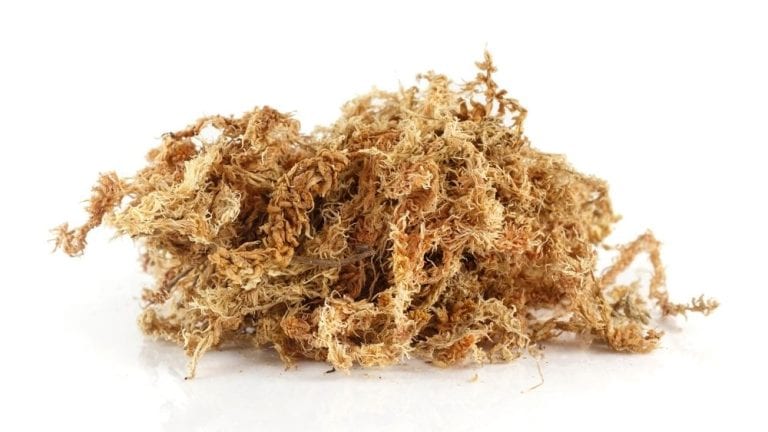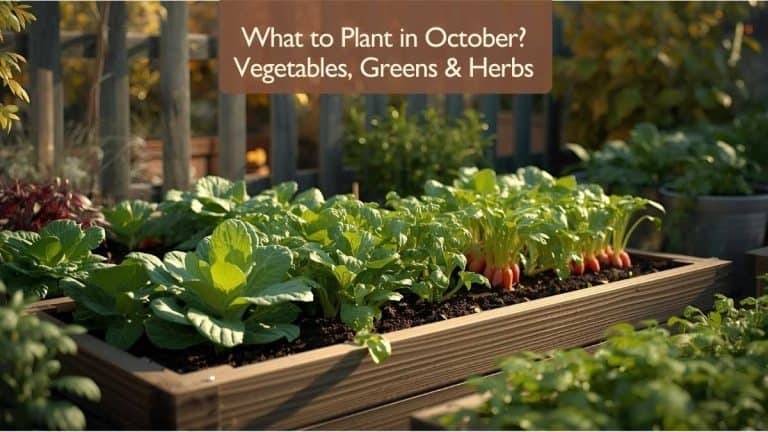Fall Balcony Plants: Top 10 for Instant Color & Easy Care
Fall balcony plants are the fastest way to turn September–November into a cozy, colorful season on your balcony or patio. Cooler temps, softer light, and morning dew make fall the perfect time to refresh containers with hardy blooms, textured foliage, and graceful grasses. When you choose fall balcony plants with layered color and texture, you’ll get a longer, low-stress display that thrives in cool weather.
While you plant, set the mood with my 432 Hz Music for Plants for a calm, cozy vibe:
Click here to watch my video on YouTube

1. Chrysanthemums (Hardy Garden Mums)
America’s classic fall bloomer in gold, rust, burgundy, and white. Buy plants with tight buds for a longer show and deadhead to keep blooms coming. (Choose hardy garden mums, not florist mums, if you plan to overwinter.) They’re an ideal backbone for fall balcony plants in mixed pots.
Light: Full sun to bright light
Water: Keep evenly moist
Why they’re great: Instant color blocks for fall container plants
Choose true hardy garden mums (not “florist” mums) and buy plants ~20–30% open for the longest show. Use a wide, free-draining pot, give full sun, and deadhead regularly; on frost nights, cluster fall balcony plants by a wall or cover with frost cloth to protect forming buds.
Keep foliage clean to deter pests – here’s my quick, gentle mix: Homemade Recipe for Shiny, Clean, and Pest-Free Leaves

2. Asters (New England/New York Aster)
Late-season daisies in purple, pink, and blue that feed pollinators. Compact varieties suit pots; taller ones add height in borders. Perfect companions in small groupings of fall balcony plants.
Light: Full sun to light shade
Water: Consistent moisture
Tip: Pair with bronze grasses and white mums
Pick compact, mildew-resistant cultivars for pots (e.g., ‘Purple Dome’, ‘Wood’s Purple’) and buy them tight in bud for a longer show. In fall balcony plants combos, give full sun and good airflow, water at soil level (not overhead) to prevent powdery mildew, and deadhead to keep fresh color.
Dealing with cottony clusters on stems? Use this fast fix: How to Get Rid of Mealybugs FAST.

3. Heuchera (Coral Bells)
Foliage star in caramel, plum, lime, and silver. Evergreen/semi-evergreen in many regions (Zones 4–9), bridging late fall into winter. Heuchera adds year-round structure to fall balcony plants without crowding the pot.
Foliage star in caramel, plum, lime, and silver. Evergreen/semi-evergreen in many regions (Zones 4–9), bridging late fall into winter. Heuchera adds year-round structure to fall balcony plants without crowding the pot.
Light: Bright shade to part sun
Water: Even moisture + good drainage
Why balconies love it: Compact, layered texture year-round
Choose container-proven cultivars (e.g., ‘Caramel’, ‘Obsidian’, ‘Lime Marmalade’) and keep the crown at soil level in an airy bark-and-perlite mix to avoid rot. In hot-summer areas give morning sun/afternoon shade; in fall balcony plants displays, remove tired leaves and give a light monthly feed – mulch or tuck pots by a wall to prevent winter heave.
4. Ornamental Cabbage & Kale
Ruffled rosettes that intensify color as temps drop – pinks, purples, and creams. Great with pansies and ivy; they bring a cool, frosty look to fall balcony plants and love brisk nights.
Light: Full sun to bright light
Water: Steady moisture, never soggy
Cold: Frost-tolerant; color improves after a chill
Buy plants with tight centers – color deepens as nights drop to 40–50°F (4–10°C). In fall balcony plants combos, use wide, heavy pots and water at soil level to keep rosettes clean; give good airflow and remove yellowing lower leaves to prevent mildew and maintain that perfect symmetry.
Seeing tiny flies near damp soil? Read: How to Get Rid of Fungus Gnats in Houseplants Permanently.

5. Pansies & Violas
Cool-season champs that flower through fall and rebound after light frosts (strong in Zones ~6–9). Pick a color story to unify pots – these tie mixed fall balcony plants together beautifully.
Light: Sun to part sun
Water: Regular; don’t let them crisp
Feed: Light liquid feed every 2–3 weeks
Choose cool-tolerant series for a longer bloom window and give morning sun/afternoon shade in warmer zones. Deadhead spent flowers and avoid burying the crown; a light feed every 2–3 weeks keeps compact growth and steady color in fall balcony plants.
If you spot white, fluffy patches, go straight to: How to Get Rid of Mealybugs FAST.

6. Heather (Calluna)
Tidy, textural spires for cool weather; beautiful with conifers and grasses. A neat vertical accent for fall balcony plants where you want contrast.
Light: Full sun
Water: Moderate; hates wet feet
Soil: Slightly acidic, well-draining
Choose compact Calluna vulgaris cultivars for containers and use an ericaceous mix (peat/coco + bark + perlite) to keep pH low. In fall balcony plants displays, lightly shear after flowering and water with rainwater (low-lime) to prevent chlorosis and keep the spires dense into winter.

7. Sedum – Hylotelephium (‘Autumn Joy’ & co.)
Architectural, drought-tolerant, and bee-loved. Dusky pink domes deepen through fall and give structure to fall balcony plants without extra fuss.
Light: Full sun
Water: Sparingly; let soil dry between drinks
Container mix: Gritty, fast-draining
Use a gritty, fast-draining mix (potting soil + perlite/pumice) and go easy on fertilizer – lean soil keeps stems sturdy and flower domes tight. In fall balcony plants combos, pick compact cultivars (e.g., ‘Autumn Fire’, ‘Matrona’) and leave the dried heads for winter texture and birds; cut back in late winter.
8. Ornamental Grasses (Pennisetum, Panicum, Festuca, Carex)
Movement, structure, and sunset glow. Seed heads + fine textures make everything else look better – especially in layered fall balcony plants.
Light: Sun to part sun (varies)
Water: Moderate; ensure drainage
Note: Choose non-invasive options for your state; check local extension guidance.

9. Cyclamen
Marbled leaves and elegant blooms for cool porches and shaded balconies. Florist cyclamen likes cool, bright conditions; hardy types (e.g., Cyclamen hederifolium) suit ground planting in Zones ~5–9. An elegant, shade-friendly star for fall balcony plants.
Light: Bright shade/filtered light
Water: Evenly moist, not soggy
Performance: Cooler nights = best show
Troubles with cyclamen on cool porches are common—wilting, yellow leaves, and crown rot show up fast in fall balcony plants. Watch my quick fixes below to keep blooms strong and foliage healthy:
Click here to watch the video on YouTube

10. Dwarf Conifers (with Skimmia in mild zones)
Structured, evergreen anchors for pots. In Zones 7–9, Skimmia adds buds/berries (female plants berry; males pollinate). Conifers are the long-term anchors that carry fall balcony plants into winter.
Light: Part shade to sun (varies)
Water: Even moisture; great winter carryover
Choose true dwarfs for containers (e.g., Pinus mugo ‘Mops’, Juniperus ‘Blue Star’, Chamaecyparis ‘Golden Mop’) and use a slightly acidic, free-draining mix, Skimmia needs ericaceous soil and a nearby male for berries. In colder zones, use a 14–18″ insulated pot, mulch the surface, and move fall balcony plants near a sheltered wall to reduce wind scorch and freeze – thaw stress.
How to Care for Fall Balcony Plants
Potting Mix & Containers
Use a high-quality indoor/outdoor mix (peat or coco) with perlite/bark for drainage. Fall rain + cooler temps = slower drying. Ensure large drainage holes; raise pots on feet to prevent waterlogging – crucial for fall balcony plants that dislike waterlogged roots.
Watering in Fall
Cool air slows evaporation. Water fall balcony plants thoroughly when the top 1 inch is dry, then let excess drain – avoid daily sips. This reduces rot and keeps blooms consistent.
New to seasonal watering? Read my Houseplants Watering Tips and grab the printable Weekly Plant Watering Planner to stay on schedule.
Feeding for a Long Show
Use a balanced, gentle liquid feed every 2–3 weeks through early/mid-fall; taper as temps drop. Feed fall balcony plants lightly – too much nitrogen causes floppy growth in cool weather.
Frost & Weather Protection
Know your first frost date (by ZIP code). On cold snaps, cluster pots by a wall, wrap with burlap/frost cloth, or move to shelter. Remove saucers before heavy rain. In colder zones, bring tender plants inside on freezing nights to protect fall balcony plants from damage.
For a complete checklist before winter, see: Winter Plant Care Tips: 5 BIG Mistakes to Avoid video below:
Easy Container Recipes Using Fall Balcony Plants
Use these as building blocks for cohesive, high-impact fall balcony plants that look great from the street and up close.
Moody Jewel Tones:
Aster (purple) + Heuchera ‘Plum Pudding’ + Black mondo grass + Ivy
Frost-Kissed Pastels:
Ornamental kale (white center) + Pansies (pale lavender) + Festuca glauca + Silver helichrysum
Warm Harvest Mix:
Mums (rust) + Sedum ‘Autumn Joy’ + Carex ‘Toffee Twist’ + Heuchera ‘Caramel’
FAQs for Fall Balcony Plants
Will these work on small balconies?
Yes – fall balcony plants can thrive in tight spaces. Pick compact varieties and 8–12″ pots. Use vertical space (shelves, rail planters, trellises).
Full sun or shade?
Most fall balcony plants handle sun to part sun. Violas, heuchera, and cyclamen prefer bright shade. Match plant to your light.
How long do they last?
Many fall balcony plants bloom through late fall; kale, heuchera, conifers, and some grasses hold structure into winter. Asters/mums are seasonal stars – plant out or compost after the show.
What about USDA zones?
Treat many options as seasonal annuals in colder zones. Perennials (heuchera, sedum, conifers) overwinter better in the ground than in pots in Zones ≤6.
Can I tuck bulbs into fall containers?
Yes – layer tulips or daffodils beneath pansies and heuchera for a spring surprise within your fall balcony plants display.
Final Thoughts
Refreshing your space with fall balcony plants delivers rich color, texture, and movement – made for cozy evenings and golden-hour photos. Mix long-lasting foliage with classic bloomers and a touch of grass, and you’ll have a display that shines from September into the first frosts. For an even cozier atmosphere while you garden, play my 432 Hz Music for Plants.
Explore More Music for Your Plants & Stay Connected!
Check out my Playlist: Music for Plants and find the perfect tunes to help your plants and yourself thrive.
Don’t forget to visit my YouTube Channel Plant House & Garden and subscribe — your support means the world to me!
Connect with me on social media for more plant care tips and music updates: Instagram | Facebook | X | Pinterest | Reddit | TikTok
Love plants? Love music? Don’t miss out on new updates — hit subscribe and follow now to keep your plants happy and your space vibrant!







